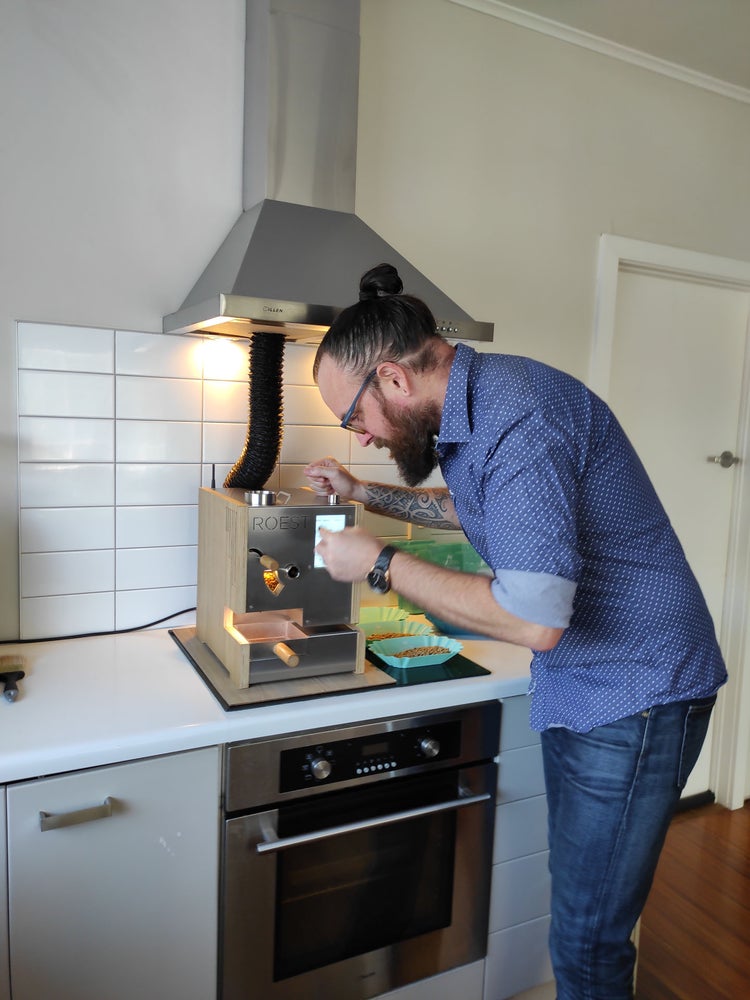From the Lab, Resources for Roasters
Monday, October 18, 2021
Roasting for Blends
Blends are the powerhouse of the coffee industry and account for the majority of coffee sold in cafes. Even with such a high prevalence in cafes, blends don’t get enough attention. For that reason, I want to focus on the nuance and art of creating, roasting and serving blends.

I’m Joseph Oosten, Trader for Sucafina Specialty Asia Pacific and have 21+ years of experience roasting for coffee companies in New Zealand and Australia. This article builds on topics covered in my previous two articles about blending for espresso parts one and two. In those articles, we discussed the art of crafting a brief, and how to select and roast coffees. Here, we’ll talk about some aspects of blending that are specific to filter and house blends.
Consistency is Key
The ultimate goal with blends is to develop a blend that balances good body, sweetness and overall flavor. I like to ensure that each of the blend components selected bring distinctive qualities to the blend without overpowering one another.
In comparison to single origins and microlots, your blend needs to provide consistency. The majority of customers seek that same satisfying daily experience and if this varies from cup to cup, the result would most likely affect overall customer satisfaction. Of course, seasonal blends and single origin or microlot offerings are a great way to offer variety to inquisitive customers. House blends, however, should bring ongoing consistency.
Extraction and Solubility
The other key focus point when developing a blend is to consider the density and solubility of each component. For example, if you have one component that is higher in density and another that is lower in density, when extracting each component separately you may have vastly different rates of extraction. Then, when extracted together as a blend you can risk either component not being well represented due to either under or over-extraction.
While this has the potential to become quite complex, the solution is to consider the density of each roasted component alongside the inherent qualities that said components are bringing to the blend. You may need to adjust the development of each component in order to achieve a more uniform overall solubility between each component.
On Milk
Another consideration for blends is that they need to be able to withstand a considerable amount of milk. In my 21 years in the industry (12 as a barista) I saw that the ratio of milk to black coffee could get as high as 90% milk. In these cases, blends should have a full body and strong flavor (though not too strong, either) that can shine through even when there is more milk than coffee.
With such a high percentage of blends being served primarily with milk, the importance this has on the blend development stages is crucial. The balanced body, sweetness and flavor need to cut through milk well. In addition, with the massively increased range of alternative milks, you also need to consider this during your development. One commonly encountered issue with blends of a lighter roast degree is adverse reactions with some milks, like curdling soy milk with an acidic/light roast. You also need to consider that a small percentage of customers will drink your blend black so ask yourself ‘how does this stand up on its own without milk’. Milk can add to the mouthfeel, body and sweetness because of its texture so be sure that your blend still has good balance when served black.
Crafting a blend for general use requires balancing the many ways it might be used. Customers are typically seeking a repeatable, consistent experience with house blends, so consistency is key. Making a good blend also means considering the extraction and solubility of each component, to ensure the final product is balanced and tasty. Finally, a good blend needs to be versatile and both be able to stand up to a high proportion of milk and be enjoyed black.
ABOUT THE AUTHOR
Joseph Oosten, Trader with Sucafina Specialty New Zealand, has 12+ years of experience roasting in Australia and New Zealand. He started roasting in 2001 and has also operated his own cafe and served as a business consultant in the sector.